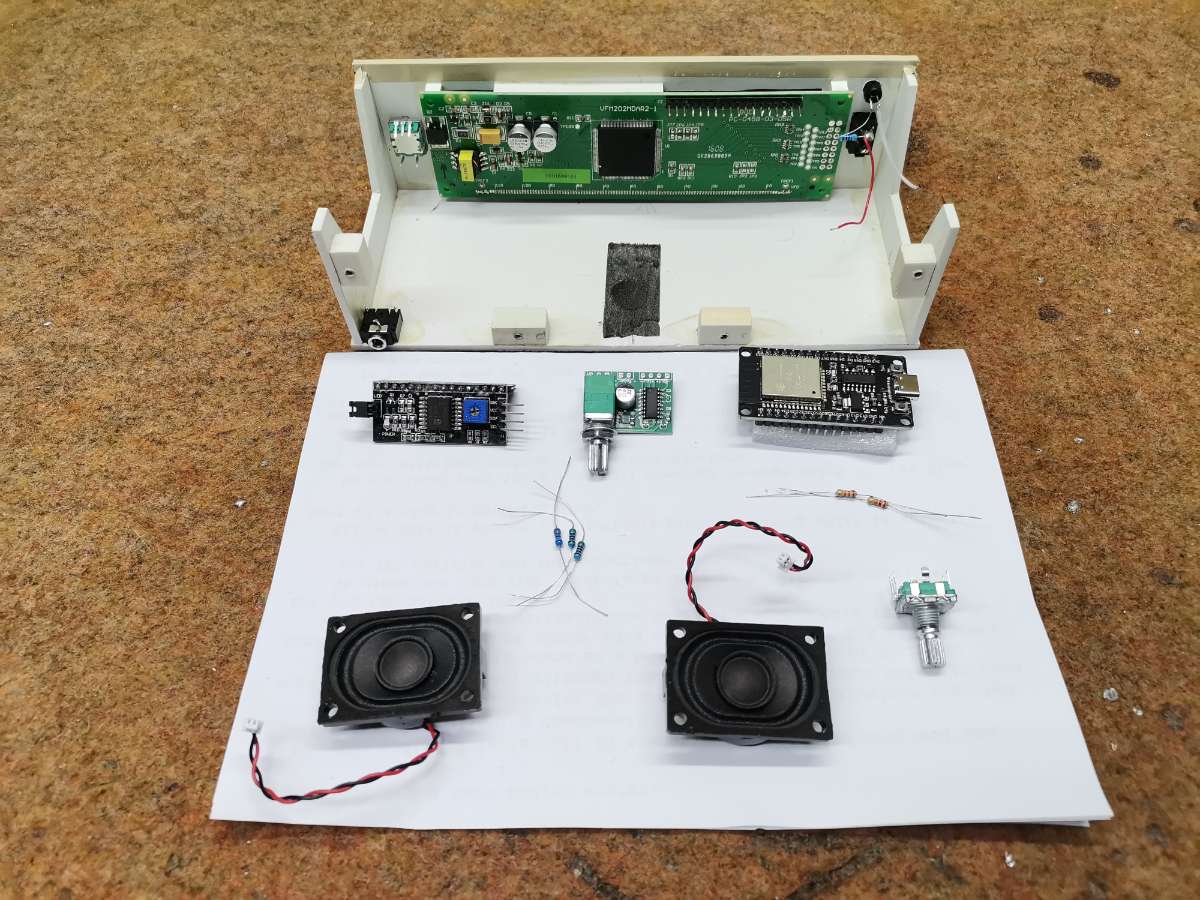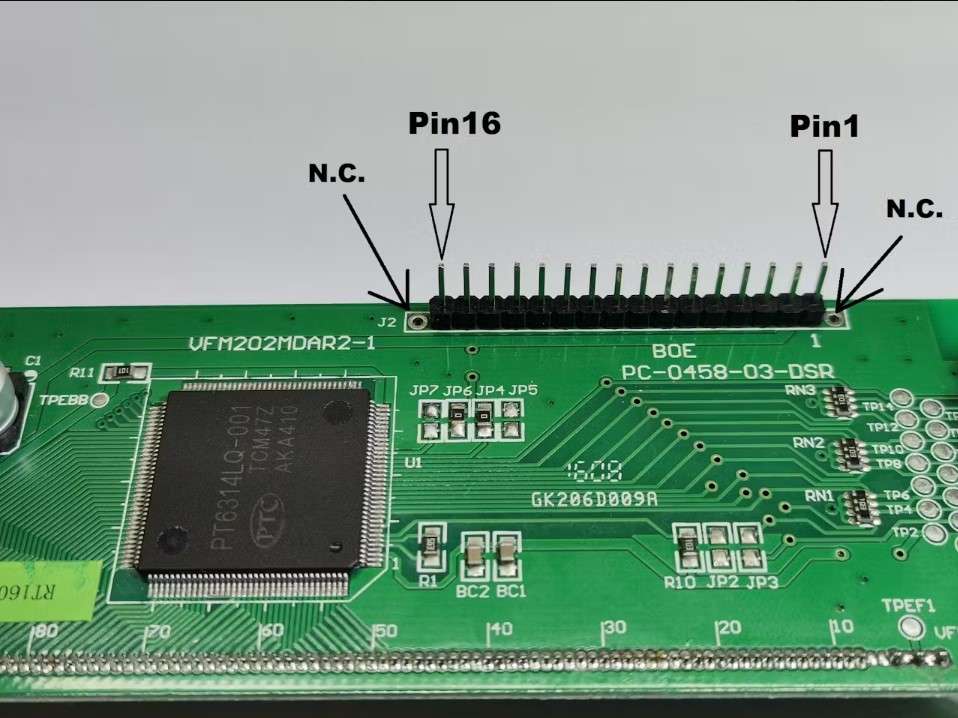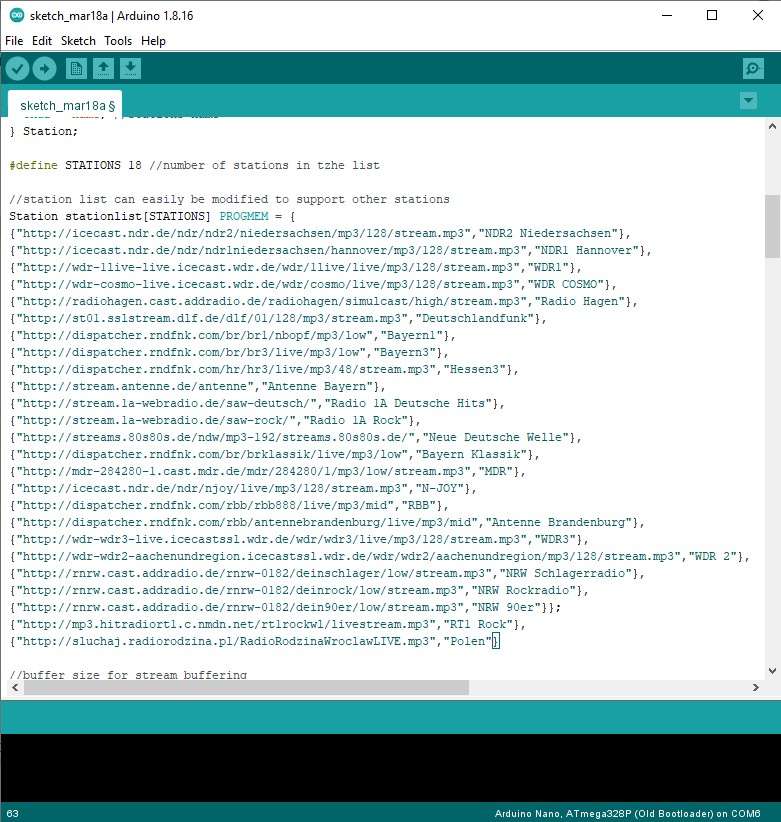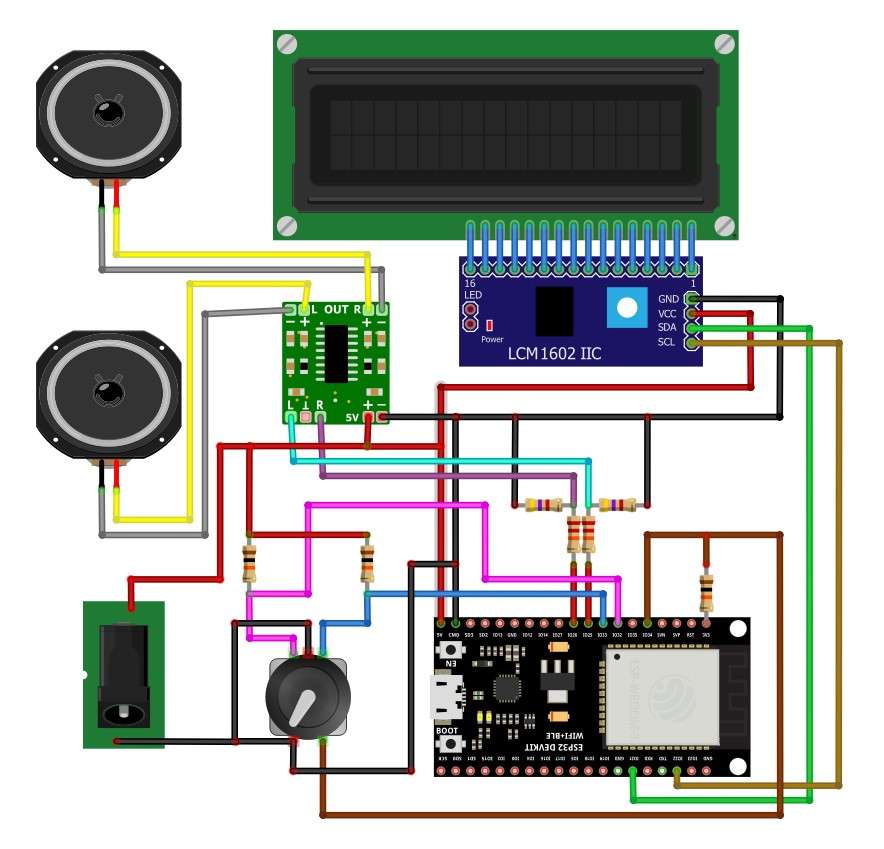Internet radio, also known as online radio or streaming radio, refers to the broadcasting of audio content over the internet. Unlike traditional radio stations that transmit over the airwaves, internet radio stations broadcast their content exclusively through the internet. Overall, internet radio has become a popular alternative to traditional radio broadcasting due to its accessibility, diversity of content, and quality. In one of my previous videos , I presented how to make an Internet radio with a TFT display and multi-format audio codec module VS1053.
The device presented in this video represents the simplest way to make an Internet radio with a minimum number of components. The project is presented on the AZ-delivery website, and I made a small hardware modification, so instead of an LCD display, now I use a VFD display, which gives a special retro touch to the device.

As I mentioned before, the device is very simple to make, and consists of several components:
- ESP32 Development Board
- VFM202 MDA1 type VFD display with 20x2 characters and I2C interface module
- Rotary encoder
- several resistors
- and if we don't want to use only headphones, we also need a PAM 8403 amplifier board and a pair of speakers.

This project is sponsored by PCBWay. They has all the services you need to create your project at the best price, whether is a scool project, or complex professional project. On PCBWay you can share your experiences, or get inspiration for your next project. They also provide completed Surface mount SMT PCB assemblY service at a best price, and ISO9001 quality control. Visit www.pcbway.com for more services
As for the hardware, you can use a standard I2C LCD Display instead of the VFD without any code changes. In a previous project of mine (https://www.hackster.io/mircemk/diy-arduino-vfd-display-20x2-vu-volume-unit-meter-37898f) there is information on how to modify this VFD display so that you can use it in the same way as a 16x2 LCD with HD44780 chip.

The only thing we need to pay attention to in this case is the I2C address of the display interface module, which we can determine with the "I2C Scanner" arduino sketch. We need to put the obtained value in the code in the line:
LiquidCrystal_I2C lcd ( 0x27 , 16 , 2 ) ; // set the LCD address to the specified value.
This time we will not dwell on the installation of the code, on the esp32 board, because it has been previously described several times. It is only important to emphasize that you must use the libraries given below, as well as esp32 Version 1.0.6 in the Arduino IDE. At the beginning of the code we need to enter the credentials of our local network, and the desired internet radio stations are entered below in the code after the line:
Station stationlist [ STATIONS ] PROGMEM = {
A maximum of 100 stations can be defined.

And now let's see how the device works in real conditions.
Immediately after switching on, the radio connects to Wi-Fi and automatically starts broadcasting the radio station that was first entered in the code. The rotary encoder can be used to scroll through the channel list. If you press the rotary encoder button, the currently displayed station is set as active. This selection is saved in the flash so that after a power interruption the program starts again with the selected station. The station currently being played is indicated in the display by a speaker symbol in front of it. This time for obvious copyright reasons I will not broadcast the audio signal or will broadcast it briefly.
Now let's give a short conclusion. The device presented in this video represents the simplest way to make an Internet radio with a minimum number of components, and the digital data stream is converted into an analog signal with two built-in digital/analog converters, which is an ideal solution for this project. We can listen to the audio signal directly on headphones, or through a small audio amplifier on speakers.
And finally, the whole device is embedded in a suitable box made of PVC material with a thickness of 3mm and 5mm, and coated with colored self-adhesive wallpaper.
